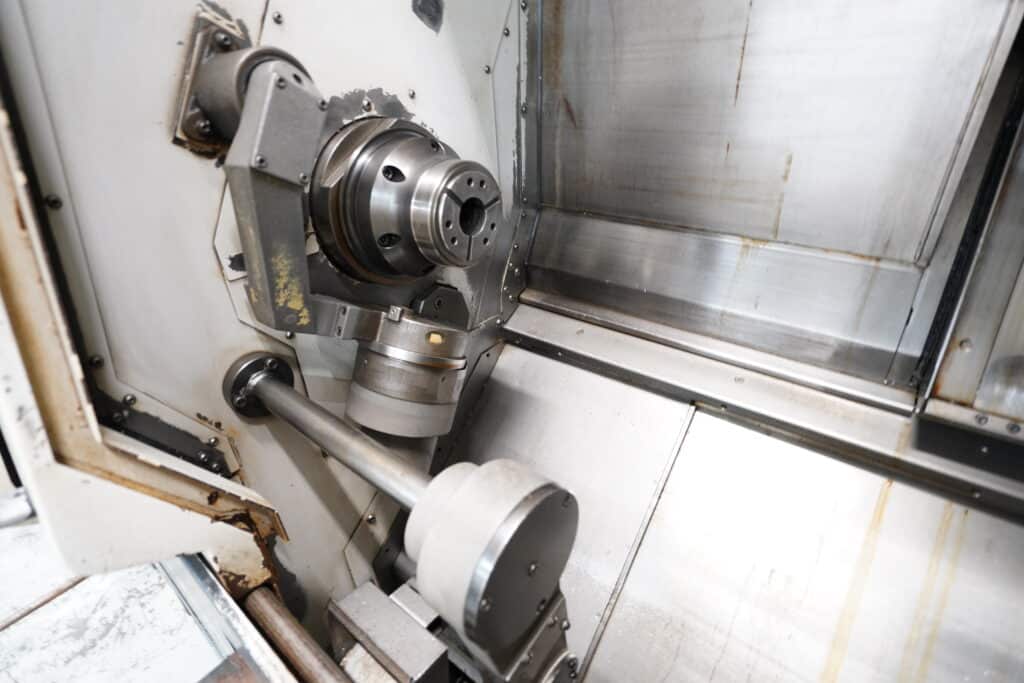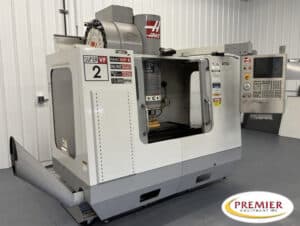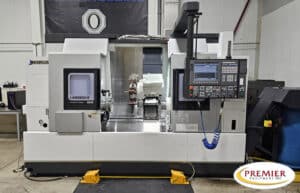Inspection of the spindle and bearing in your CNC machine is a regular thing – it’s necessary for best performance, machine accuracy, and the machine’s life span. Inspections are performed at irregular frequencies depending on the CNC machine, whether it is frequently used, the materials being machined, and the working conditions. Here are general guidelines to help you establish an effective inspection schedule:
Daily Checks
- Visual Inspection: Check the spindle area at the start and day’s end, take a quick browse to find any damage or wear visible.
- Listen for Unusual Noises: Look out for any unusual sounds of grinding, clicking or humming whilst in operation as this may mean you have bearing problems.
- Monitor Vibration Levels: Listen out for too much vibration as this can mean that your spindle is not balanced or your bearing is starting to wear.
- Temperature Check: Spindle housing can feel unusually hot after operation; that can be a sign of lubrication problems or bearing failure.
Weekly Inspections
- Lubrication System: Look at the oil levels for the lubrication system and check that everything is in order that way. Both spindle and bearing health are dependent on proper lubrication.
- Tool Holder and Retention Knobs: Check for wear, but also wear on these components can adversely affect spindle performance leading to premature bearing wear.
Monthly Inspections
- Spindle Runout Testing: Measuring the cnc machine spindle runout is done using a dial indicator. Poor machining quality can result from excessive runout, and excessive runout may be an indication of spindle or bearing wear.
- Alignment Checks: Make sure the spindle are well aligned to the mechanical axes the machine can carry, to avoid the stress to the bearings if it’s stayed in position.
- Cooling System: Be sure that any spindle cooling systems are working properly to avoid overheating.
Quarterly Inspections
- Bearing Condition Assessment: Inspection of the bearings is carried out more in depth. Check for wear in the form of discoloration, pitting or spalling.
- Vibration Analysis: Do a vibration analysis to find out early sign of bearing fatigue or spindle imbalance.
- Lubricant Replacement: If appropriate change the spindle lubrication oil according to manufacturer’s recommendation.
Annual Inspections
- Professional Maintenance Service: Have a qualified technician schedule an overall inspection. However, they can do more, such as ultrasonic testing or thermal imaging.
- Spindle Balancing: Have the spindle professionally balanced to eliminate any imbalances that could lead to bearing damage.
- Bearing Replacement: If the bearings appear to be used and worn, or if the machine operates in heavy loads at very high speeds, it may be worth considering replacement of the bearings.
Factors Affecting Inspection Frequency
- High-Usage Environments: More frequent (than normal) inspections are typically required for machines that operate continuously for 24 hours or under heavy loads.
- Harsh Operating Conditions: There’s no doubt that continued exposure to dust, moisture or extreme temperatures can speed up wear and you’ll need to do more often checks.
- Material Types: Machinery wear increases relative to machining abrasive materials such as composites or hardened steels.
- Age of the Machine: The reason for this is accumulated wear with older machines.
Best Practices
- Keep Detailed Records: Keep a notebook of all inspections, activities of maintenance and anything noted in respect of problems. This allows predicting future maintenance needs and reducing unexpected downtime.
- Operator Training: Also be sure that machine operators are trained to recognize early warning signs of spindle and bearing problems.
- Use Quality Components: To prevent integrity of the CNC machine, always use manufacturer recommended lubricants and replacement parts.
- Implement Predictive Maintenance: You can use these technologies such as vibration monitoring and thermal imaging to find problems before they become catastrophic.
Warning Signs That Require Immediate Attention
- Sudden Decrease in Machining Quality: This includes poor surface finish, chatter marks or dimensional errors.
- Unusual Sounds or Vibrations: New or increasing noise and vibration during operation.
- Increased Operating Temperatures: Hotter spindles than normal.
- Frequent Tooling Failures: If your tool is wearing out faster than expected, then the problem may be with your spindle or bearings.
Conclusion
For effective and precise operation your CNC Machine requires regular inspection and bearings maintenance. Machine operators can check each day and each week, but monthly, quarterly or annual inspections may require specialized tools and expertise. By following a well defined maintenance schedule and observing the machine’s performance, you can avoid expensive repairs, minimize downtime and keep your used CNC machine running at peak performance.



